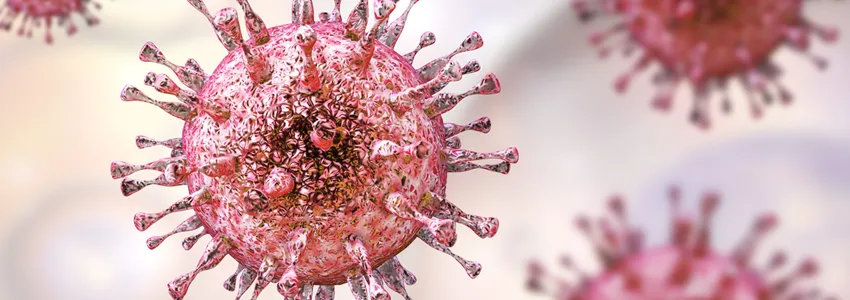
Photo by Kateryna Kon, Shutterstock: Salmonella bacteria cause about 1.2 million illnesses a year, but a new Stanford study identified a molecule that offers natural protection against the pathogen.
Stanford Medicine News Center - July 23rd, 2018 - by Kimberly Hickok
Organ transplants save lives, but the immune-suppressing drugs needed to protect transplants leave recipients susceptible to potentially deadly infections like cytomegalovirus, or CMV. Now, a team of Stanford researchers is trying to predict which kidney transplant patients might be at risk.
With the help of a grant from Stanford ChEM-H, the researchers — Olivia Martinez, PhD, professor of surgery; Stephan Busque, MD, professor of surgery; Mark Davis, PhD, professor of microbiology & immunology; and postdoctoral scholar Marc Lucia, PhD — are studying why the immune system manages to fight off CMV in some patients but not in others.
“We’re seeking answers to basic science questions,” Davis said. But in answering those questions, the team could one day help protect transplanted organs and help save lives.
Fighting a common foe
Most people catch CMV at some point in their lives, usually as children, but a healthy immune system typically keeps the virus under control and symptoms at bay. However, organ transplant patients must take drugs that weaken their immune systems so that their bodies are less likely to reject the donor organs. The patients’ weakened immune system allows viruses like CMV to flourish, through either a new infection or reactivation of a previously silent infection. About a third of people who receive kidney transplants end up with CMV infections that can cause them to lose the transplant or even die.
The problem is, no one is sure who is most susceptible. If doctors could predict which patients’ immune systems could fight off CMV and which couldn’t, they’d be better able to protect those patients who are at risk. To that end, the researchers plan to examine special immune cells, called T cells, in two groups of transplant patients — one with CMV disease and one without.
Better predictions
“T cells are critically important in immune control of viral infection,” Martinez said. But they aren’t always successful. To find out why, the team will analyze T cells in blood samples taken from one group of transplant recipients in whom the virus is under control, and another group in whom CMV is reactivated. The researchers will sequence the proteins that dot the outside of T cells and recognize infections — there are billions of such sequences — in order to find combinations that are present in one group of patients but not the other.
The team members will be aided in their work by a method Davis’ lab developed called single T cell RNA-sequencing, which will help them build a detailed molecular picture of individual T cells. “We’re in a unique position here because this technique allows us to get much deeper into what the T cells are doing in this disease,” said Davis, who is also the Burt and Marion Avery Family Professor.
The researchers hope to find patterns in the T cells that correspond with the risk of CMV disease or complications from a dormant CMV infection. Results from the study will not only help develop better tools for identifying transplant patients at risk of CMV disease, said Martinez, “but will also be used more broadly for understanding basic characteristics of viral immunity and vaccine design.”
The group expects the analysis to take about one year, using an approach that wasn’t even possible until recently. “Now we’re able to bring modern research into this practice,” Martinez said.
Martinez is a member of Stanford Bio-X, the Stanford Child Health Research Institute and the Stanford Cancer Institute. Davis is a member of the Stanford Neurosciences Institute, the Stanford Cardiovascular Institute, Stanford Bio-X, the Stanford Child Health Research Institute and the Stanford Cancer Institute.


